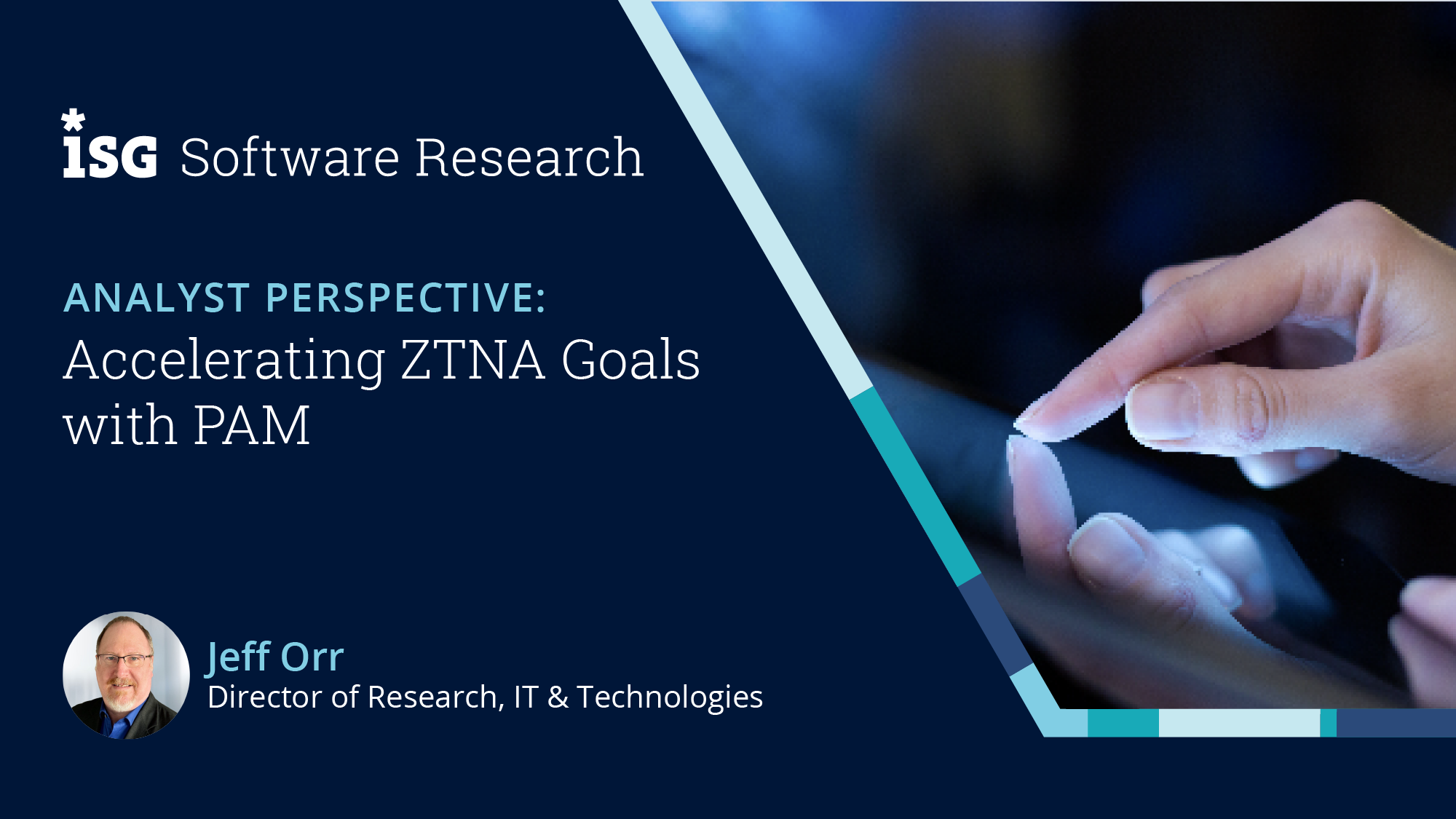The shift toward a Zero Trust Network Access (ZTNA) framework is a strategic move for enterprises aiming for an enhanced security posture. ZTNA operates on the principle of "never trust, always verify," ensuring that every user and device is authenticated and authorized before accessing resources. In this context, Privileged Access Management (PAM) emerges as a critical enabler for an effective ZTNA implementation.
PAM applications play a critical role in securing privileged identity accounts, which have elevated permissions and greater access to sensitive systems and data. These accounts are often prime targets for cybercriminals due to the extensive access they provide and the potential for significant damage if compromised. PAM software focuses on controlling and monitoring this elevated access by implementing stringent authentication protocols, session monitoring and access controls, thereby minimizing the risk of insider threats and external attacks.
In contrast, Identity and Access Management (IAM) encompasses a broader strategy for managing user identities across an organization, including both privileged and non-privileged accounts. IAM software is designed to ensure that the right individuals have appropriate access to the right resources for the right reasons. This involves user provisioning, deprovisioning, role-based access control (RBAC) and compliance monitoring. While PAM is concerned primarily with protecting high-profile accounts that carry a higher risk, IAM focuses on the entire spectrum of identities within an enterprise, including employees, contractors and partners, delivering a solution approach to access management.
ISG Research asserts that by 2027, over two-thirds of enterprises will have adopted identity access management platforms to protect enterprises’ intellectual assets and resources. By controlling access to privileged accounts, enterprises can significantly reduce their attack surface and enhance their overall security.
By controlling access to privileged accounts, enterprises can significantly reduce their attack surface and enhance their overall security.
There are several ways PAM contributes to an accelerated transition to ZTNA, including:
- Enhanced Security Controls: PAM software provides an additional layer of security by implementing strict controls on who can access which resources and under what circumstances. This aligns with the ZTNA principle of continuous authentication and access control.
- Visibility and Monitoring: PAM offers comprehensive visibility into privileged account activity, allowing organizations to monitor and record all access attempts. This transparency is crucial for identifying anomalies, thereby supporting the continuous verification aspect of ZTNA.
- Automated Policy Enforcement: PAM applications can enforce security policies automatically, reducing the risk of human error. This automation is particularly valuable in ZTNA environments, where tight access controls are essential.
- Improved Threat Response: By integrating PAM with threat detection tools, enterprises can quickly respond to suspicious activities. The agility provided by PAM tools allows for faster containment of breaches, which is vital in the ZTNA framework.
Before integrating PAM into a ZTNA strategy, enterprises need to consider auditing existing privileged accounts, user training, compatibility of technologies and regulatory compliance. Organizations must conduct a thorough audit of existing privileged accounts to understand who has access to what and determine the necessity of those privileges. The workforce must be trained in the importance of PAM, access controls and the nature of the ZTNA model. A well-informed workforce is critical to the success of any security strategy. Leaders should ensure that the chosen PAM software integrates seamlessly with existing IT and cybersecurity infrastructure, as compatibility will facilitate smoother operations and enhance overall security. Teams should also review compliance requirements related to privileged access and data security and verify that the PAM software effectively supports these compliance initiatives.
To maximize PAM when migrating to a ZTNA environment, one effective strategy is to implement contextual access management. By utilizing PAM tools, organizations create access controls informed by user behavior and device health. For example, if a privileged user attempts to access critical applications from an unfamiliar location or on an unknown device, the PAM software can be configured to require additional authentication steps. This dynamic approach adds an extra layer of security, ensuring that only authorized actions are permitted based on contextual information.
Another significant aspect of using PAM in the ZTNA transition is session monitoring and recording. By employing the session monitoring features of PAM systems, enterprises can record activities conducted during privileged sessions. This capability enhances compliance tracking by providing a detailed log of access and activity. Furthermore, it supplies vital evidence during security audits that pertain to access control within the ZTNA framework, supporting an organization’s accountability and transparency.
Additionally, organizations can benefit from employing just-in-time privilege access features within PAM solutions. This approach allows enterprises to grant elevated permissions only when necessary and for a specified, limited duration. By minimizing the duration for which privileges are granted, organizations significantly reduce the window of opportunity for malicious actors. This practice aligns seamlessly with the ZTNA principle of least privilege, promoting a more robust security posture.
Lastly, integrating PAM with existing Identity and Access Management (IAM) systems is crucial for achieving a comprehensive approach to user access management. This integration facilitates the streamlining of identity verification processes, thereby enhancing the overall user experience within a ZTNA environment. By working in conjunction, PAM and IAM ensure that access is managed effectively, balancing security needs with operational efficiency.
Privileged Access Management can play a pivotal role in facilitating an enterprise's transition to a Zero Trust Network Access model. By enhancing security controls, providing visibility, automating policy enforcement and improving threat response capabilities, PAM is well-aligned with the goals of ZTNA. As organizations navigate this transition, understanding the prerequisites and best practices for integration will be crucial to ensure a successful and secure ZTNA implementation.
Regards,
Jeff Orr
Fill out the form to continue reading.

